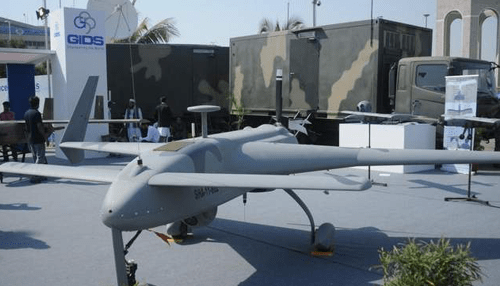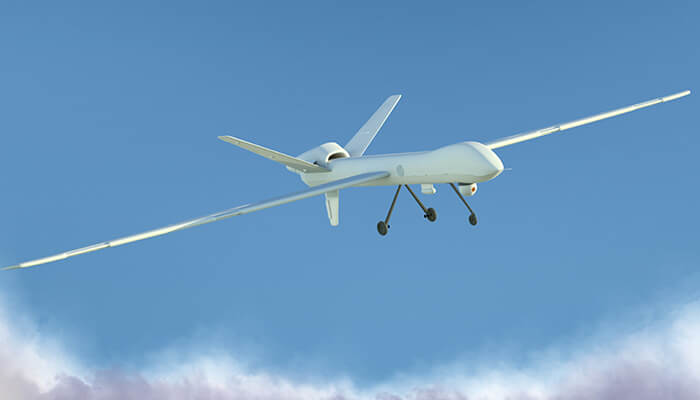Global Industrial & Defence Solutions (GIDS)’ director of sales and marketing, Asad Kamal, told IHS Jane’s that the company is working on upgrading its Shahpar unmanned aerial vehicle (UAV) and examining the notion of developing a new medium-altitude long-endurance (MALE) UAV.
As per Kamal, the upgraded GIDS Shahpur is being positioned to supplant Pakistan’s tactical intelligence, surveillance and reconnaissance (ISR) UAVs, namely the Leonardo Falco and EMT LUNA.
IHS Jane’s states that the Shahpur can carry 50 kg in ISR equipment, such as an electro-optical and infrared (EO/IR) pod. It has an endurance of seven hours and a line-of-sight radio data-link range of 250 km. The UAV “features a canard and swept-wing configuration with a pusher propeller, a belly-mounted gimballed payload, and a tricycle undercarriage.”
Kamal added that GIDS is examining the prospect of developing a MALE UAV. GIDS is currently waiting for information from the armed forces before placing the program in motion, but the company is intent on elevating Pakistan’s competency in UAV development and manufacturing.
Although Pakistan operates several tactical UAV systems, such as the National Engineering and Scientific Commission (NESCOM) Burraq armed drone, MALE UAV platforms such as the China Aerospace Science and Technology Corporation (CASC) CH-5 would be a logical next step. In fact, the Pakistani military was examining the Chengdu Aircraft Industry Group (CAIG) Wing Loong in June 2016.
Notes & Comments:
The development of a MALE UAV would be a significant step. Although MALE UAVs vary in capability, with designs ranging from the tactically-focused CH-4 to the 60-hour capable of CH-5, indigenous development could require at least a decade. For example, the Turkish Aerospace Industries (TAI) Anka was initiated in 2004, with its maiden flight in 2010, and service entry as recently as 2016.
Second, GIDS would require an anchor in launch orders – and investment – from the Pakistani military to make an indigenous MALE UAV sustainable. If the Pakistani military requires MALE UAVs in the near-term, it will likely procure an off-the-shelf system.
However, as not all MALE UAVs are the same, especially in terms of endurance and payload, the armed forces could define separate requirements. Where the Army, Navy and/or Air Force could defer to CASC for a long-haul option (e.g. CH-5), the armed forces could task GIDS to develop a smaller attack UAV (akin to the CH-4 or Anka). Development overhead can also be distributed if GIDS collaborates with Pakistan Aeronautical Complex (PAC), Integrated Dynamics and/or a foreign company, such as TAI or Denel Group.



